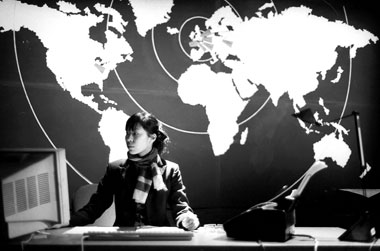In Cocteau's 1950 film Orphée, in scenes modelled on the secret communications networks operated by the Résistance during the Second World War, the hero hears lines of coded radio transmissions from a dead poet. In Calling All Agents, INS General Secretary Tom McCarthy argues that this conjunction of the technological, the aesthetic and the political is loaded with contemporary significance. He maps the transmission-reception figure across Freud, Heidegger, Hergé, Burroughs and Nabokov, the invention of the telephone and the discovery of Tutenkhamun, connecting it with contemporary artistic strategies and wireless technologies.
From General Secretary's Report to the International Necronautical Society by Tom McCarthy"...the starting point was, I was fascinated with this moment in Jean Cocteau’s 1949/1950 film Orphée—his retelling of the Orpheus myth—where this dead poet, Cégeste, after he’s dead, he sets up almost like a pirate-radio transmitter, and he transmits these short lines of poetry, these urgent messages. Orphée, who’s alive, picks them up on his car radio between stations—it’s not a registered radio station. And he is completely compelled by these messages. They say things like, “Listen, the bird paints with his fingers, two times. I repeat…” and then it repeats. Or “Silence goes more quickly when played backward. Listen, two times.” And then there is a chain of numbers and general sound of static and things. And it seemed to me, when I saw the film, that Cocteau was onto something. He’d intuited some essential relationship between technology, poetry, and desire.
And when I looked into it further I found that Cocteau had kind of stolen the idea, if you like, or had gotten the idea from World War II, when the British Secret Services were transmitting into occupied France, these lines of poetry, just like in the movie. Ninety-nine out of every hundred meant absolutely nothing, but every hundredth or two-hundredth was code for, like, “Now, blow up the bridge.” “Now, assassinate the colonel.” So, of course, the Germans didn’t know which was which. So they’re listening to them, looking for patterns of recognition and trying to crack them.
That was the starting point for the project that I ended up doing at the Institute of Contemporary Arts: sending out these radio messages, trying to open up this kind of sub-official, subliminal frequency that was at once an aesthetic project and a political one, I guess. "
From the Believer magazine

No comments:
Post a Comment